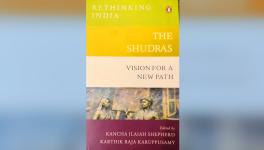Priyanka Gandhi's Sonbhadra Experiment Will Fail Unless Cong Stops Fearing Hindus

Congress leader Priyanka Gandhi’s foray into east Uttar Pradesh to show empathy for the families of tribals killed and injured in the firing by a backward caste landlord in Sonbhadra district is suggestive of the strategy her party plans to pursue for crafting its revival. Yet this strategy is unlikely to succeed as long as the Congress does not neutralise the Bharatiya Janata Party’s (BJP) seemingly inexhaustible capacity to communally polarise the electorate through Hindutva.
Priyanka’s alacrity in responding to the Sonbhadra killing can be parsed to identify several elements in the Congress’ strategy for revival. It is proof of the Congress putting behind itself the battering it received in the 2019 Lok Sabha election, of ensuring its workers don’t remain demoralised interminably. The party wishes to eschew its habit of emerging out of its cocoon a few months before any election, state or national, before becoming somnolent again. It would seem the party has belatedly realised that street politics is the most appropriate method for rebuilding the party.
This in itself suggests the Congress has accepted what is likely to be the new reality of Indian politics for the next five years – that the BJP will dominate power politics; that MPs and MLAs will be scared into or enticed to desert the Opposition, as has dramatically happened in Karnataka and Goa, but also in other states. These desertions will delegitimise the ideological opposition to the BJP. Simultaneously, the Modi government will file corruption cases against Opposition leaders, as has already been done against some, to undermine their credibility.
Priyanka’s Sonbhadra experiment has an ideological dimension to it – that the party stands for the poor and the oppressed against dominant social groups. By preventing Priyanka from visiting Sonbhadra, Uttar Pradesh Chief Minister Adityanath turned the spotlight on her, evident from the extensive media coverage of her adamant refusal to budge from Mirzapur, where she was stopped from going to Sonbhadra.
Geriatric Congress leaders, inclined to nostalgia than to the existing political reality, will be reminded of Indira Gandhi’s visit to Belchi village, in Bihar, where seven dalits were burnt to death by an upper-caste mob on May 27, 1977. About Indira’s visit to Belchi, historian Ramachandra Guha writes in India After Gandhi: “The roads had been washed away in the rains; she had to exchange her car for a jeep, then this for a tractor, then – when the mud got too deep – that for an elephant. It was via this mode of transport that the former prime minister reached Belchi to console the families of those killed in the violence.”
Indira atop the elephant became an iconic image for depicting the turnaround in the fortunes of the Congress, which had lost power at the Centre for the first time a few months ago, in March 1977, and the Janata Party came to power. The symbolical importance of Indira’s elephant ride was articulated by Janata Party leader Madhu Limaye, who wrote in the book, Janata Party Experiment: An Insider’s Account of Opposition Politics, “It helped damn the Janata Government as being indifferent to the fate of the poor and the Harijans. The ride refurbished Indira Gandhi’s image as a friend of the poor and the lowly. It also showed to…the Congress Party that Indira Gandhi was a woman of action and she alone could be trusted to lead the fight back to power.”
There is a parallel, even though tenuous, between Priyanka’s Sonbhadra push and her grandmother’s Belchi visit. Both actions are united in their symbolical support for a marginalised social group. Like Indira, Priyanka seeks to portray the Congress, to use Limaye’s words, as a “friend of the poor and the lowly.”
Unfortunately for the Congress, the socio-political matrix of 2019 is remarkably different from that of 1977. For one, the Congress, even after its defeat in 1977, had a little over 150 seats in the Lok Sabha. The party consequently always had a robust chance to return to power. The Congress, today, has just 52 seats.
For the other, the Janata Party was a medley of political outfits which worked at cross-purposes. By contrast, the BJP is a homogeneous, tightly-knit outfit, which the Rashtriya Swayamsevak Sangh (RSS) controls. It is impossible for the party to come apart, as the Janata Party did.
Perhaps even more significant is the dominance that the RSS’ Hindutva philosophy has acquired in recent times. Hindutva is predicated on othering the religious minorities, particularly Muslims; it relies on stoking the fear that a Hindu India is under siege, from Pakistan and Muslims. Hindutva is the BJP’s instrument to coalesce divergent social groups, often with contradictory interests, to construct a mammoth social base.
Hindutva has prevented the Congress as well as other parties from reconfiguring their social bases. In the 1970s, the Congress had forged a social alliance between the upper castes, particularly the brahmins, the dalits and Muslims. Indira could take a ride to Belchi, signal her support for the poor and yet not alienate her upper caste supporters.
It is moot whether the Congress can build an alliance across caste and class without blunting the edge of Hindutva. After all, Hindutva was instrumental in sweeping aside the popular worries about the slowing economy, rising unemployment, agrarian distress and the havoc of demonetisation to give the BJP a stunning victory in the 2019 election.
Yet the Congress remains reluctant to challenge Hindutva’s central tenets, apprehensive that it might alienate the Hindus. A month ago, Tabrez Ansari was horrifically lynched in Jharkhand. Neither Priyanka nor Rahul Gandhi visited Ansari’s family to commiserate with them, as they scarcely ever did with Muslim victims lynched over the last five years. The Congress leadership didn’t want to be stuck with the label of pro-Muslim. In continuation of this policy, Rahul also hopped from one temple to another to affirm his Hindu identity, yet he failed to wean away a substantial section of Hindus from the BJP in North India.
The fear of alienating Hindus continues to dog the Congress. For instance, the Congress did not vote against the National Investigation Agency (Amendment) Bill, which was passed with an overwhelming majority in the Lok Sabha last week. It remains afraid of being tagged anti-national and anti-Hindu.
The party articulates the nebulous concept of love, as opposed to Hindutva’s hate, but dithers from living it. As India’s principal Opposition party, the Congress should have raised the issue of nine human rights activists who were arrested last year on the specious charge of assisting Maoists. It hasn’t, either because it believes activists are a nuisance or is afraid of being labelled as anti-national.
From this perspective, Priyanka can protest against the killing in Sonbhadra because it wasn’t a Hindu-Muslim conflict. It wasn’t even a conflict between the tribals and the upper castes, which the Congress still hopes to woo.
Unless the Congress dares to ideologically challenge Hindutva at the grassroots, its outreach is likely to yield limited returns in the Hindi heartland, particularly in those states which do not have bipolar politics. Gone are the days when the Congress would establish peace committees and hold marches to repair communitarian relationship, each time it broke down because of a communal riot. Now, the party merely hopes Hindutva’s appeal will somehow disappear.
More than Priyanka’s Sonbhadra experiment, the Congress needs to give up its fear of offending Hindus to spark off its revival.
The writer is a Delhi-based independent journalist. The views are personal.
Get the latest reports & analysis with people's perspective on Protests, movements & deep analytical videos, discussions of the current affairs in your Telegram app. Subscribe to NewsClick's Telegram channel & get Real-Time updates on stories, as they get published on our website.























